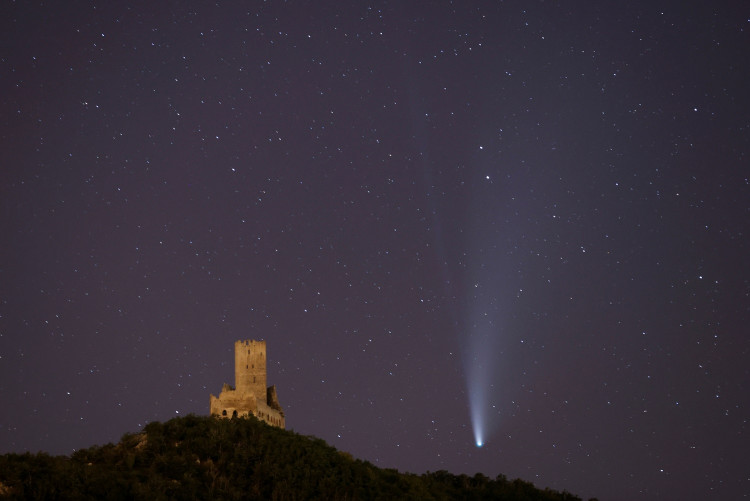The brightest comet of 2021, Comet Leonard, has disintegrated.
Comet Leonard (C/2021 A1) broke up during its perihelion, or closest approach to the sun, according to EarthSky. Perihelion was predicted to occur on Jan. 3, a year after the comet was discovered.
Gregory Leonard of the Catalina Sky Survey in Tucson, who discovered the comet, told EarthSky that the comet's legacy was the tail structures made up of charged particles known as ions. After seeing the comet on Jan. 3, 2021, the tail was subjected to "spectacular outburst-induced displays," he said.
Even if the comet had survived its trip around the sun, it would have been hurled into intergalactic space, never to be seen again. But such was not to be the case. In late November, there was a false alarm that the comet was showing indications of stress.
"Observers - mainly amateur astronomers who carefully view and image these objects - began to wonder if the comet was beginning to disintegrate," EarthSky reported. "Several signs of unusual behavior caused this alert. The brightness trend slowed, the head of the comet no longer appeared round, and the comet's path seemed to be veering off course."
However, these circumstances did not cause the comet to disintegrate. Moonlight and light pollution at the observers' location influenced the brightness estimation, which can limit the magnitude of the coma. Furthermore, although it could not have been expected at the time, additional investigation of the nucleus revealed that it was not breaking up.
Comets, however, are famously unpredictable, according to Space.com. Comet Leonard did fall under the Bortle Limit, which was proposed by amateur astronomer John Bortle in 1991 as a brightness scale. Simply put, the limit states that as the comet approaches the sun, it must become brighter in order to survive the journey.
However, in the weeks leading up to perihelion, Comet Leonard's brightness began to fluctuate every three to five days. According to EarthSky, the comet's tail began to exhibit some sophisticated structure, probably as a result of parts breaking off the nucleus, revealing new places that the sun would subsequently burn.
Martin Masek first confirmed Leonard's disintegration on Feb. 23. Other observers, including the SLOOH telescope in Chile, obtained photographs that revealed the comet to be nothing more than a "ghostly streak," according to EarthSky.
The discoverer of the comet, however, expressed gratitude for the opportunity to witness an object that was a remnant of the early solar system.
"I also appreciate that comets are reminders of the transient nature of ... well nature, and all things," Leonard said. "And of course, comets are full of surprises, reminding us that we humans are not in control."






